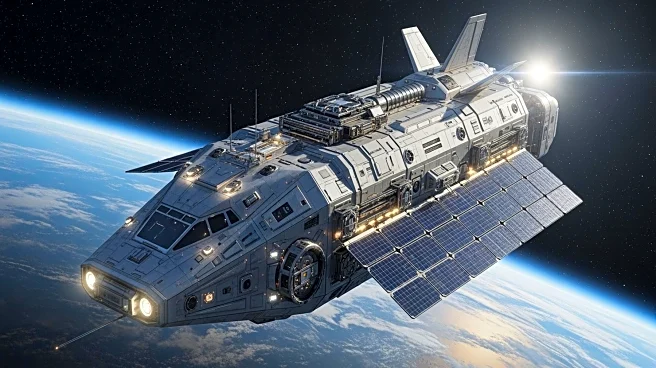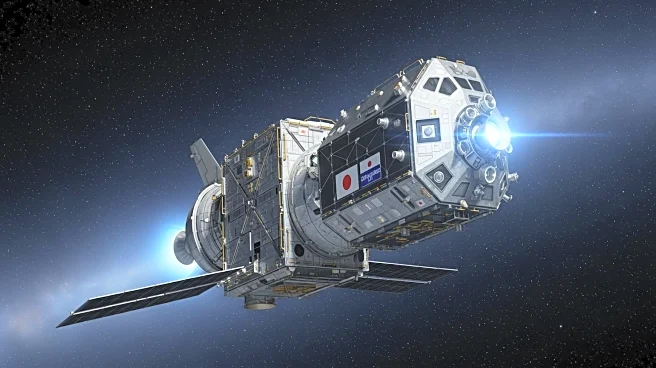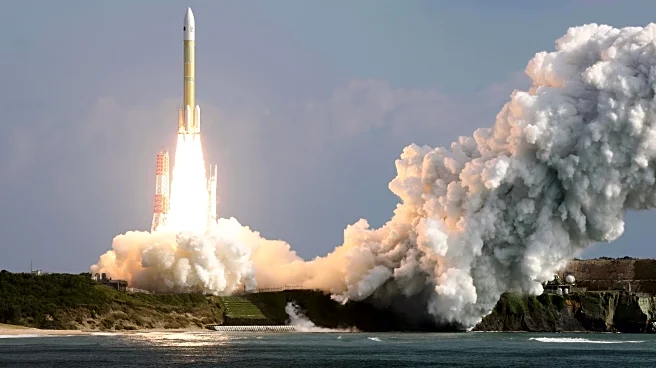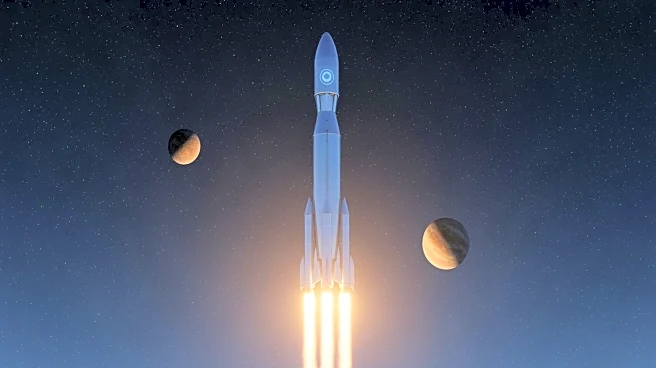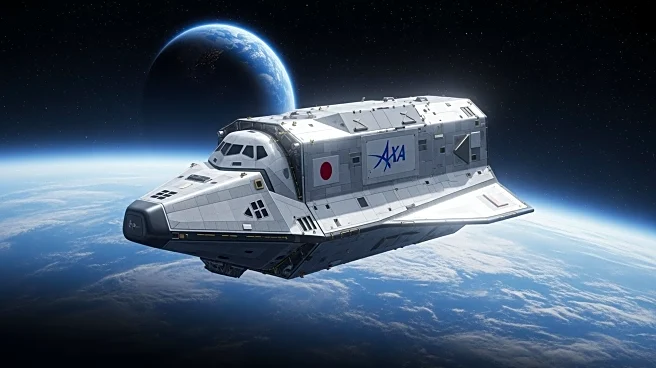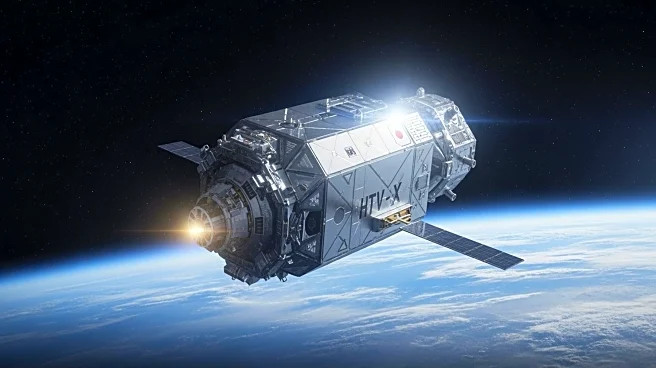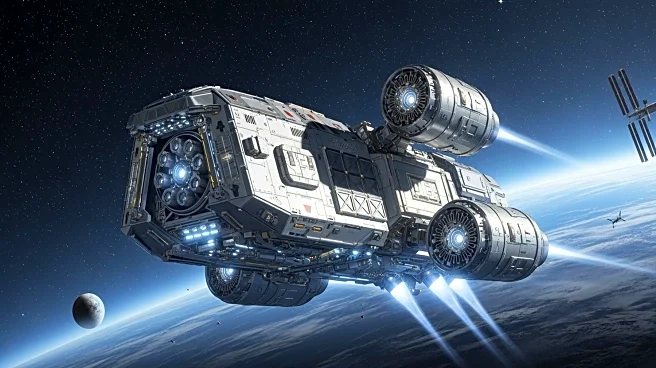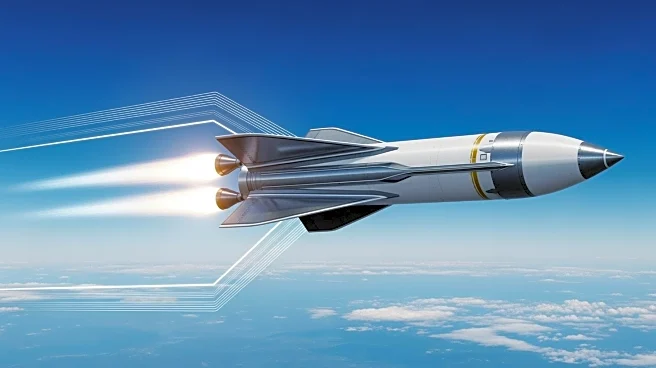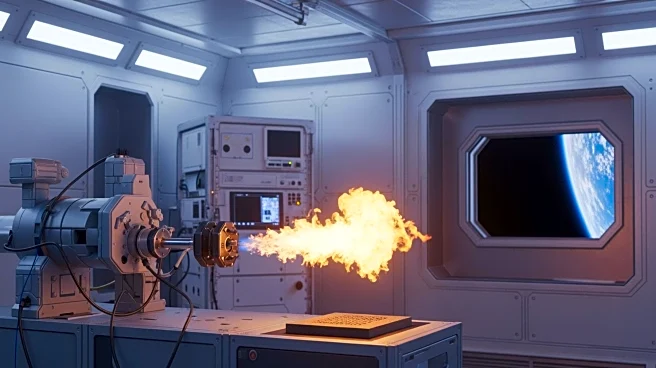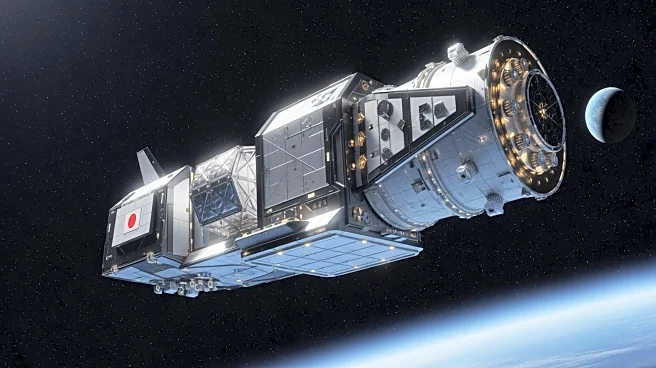What's Happening?
The Japan Aerospace Exploration Agency (JAXA) has successfully launched the HTV-X1 spacecraft, a new cargo vehicle designed to deliver supplies to the International Space Station (ISS). The spacecraft was
launched from the Tanegashima Space Center in southern Japan atop the No. 7 H3 rocket. The HTV-X1 is the successor to JAXA's previous unmanned H-II Transfer Vehicle, known as Kounotori, which completed nine missions to the ISS between 2009 and 2020. The spacecraft is expected to arrive at the ISS in a few days, where Japanese astronaut Kimiya Yui, currently stationed at the ISS, will use a robotic arm to capture the craft.
Why It's Important?
This launch marks a significant advancement in Japan's space exploration capabilities and its ongoing contribution to international space missions. The HTV-X1's successful deployment underscores JAXA's role in supporting the ISS, a critical platform for scientific research and international cooperation in space. The mission also highlights the importance of reliable cargo delivery systems for maintaining the ISS's operations and supporting the astronauts aboard. As space exploration continues to expand, the development of new technologies like the HTV-X1 is crucial for future missions, including potential lunar and Mars expeditions.
What's Next?
Following the successful launch, the HTV-X1 is expected to dock with the ISS in the coming days. The supplies delivered will support the ongoing research and daily operations of the astronauts aboard the station. JAXA will continue to monitor the spacecraft's journey and docking process. The success of this mission may pave the way for future collaborations and technological advancements in space exploration, potentially influencing Japan's role in upcoming international space missions.
Beyond the Headlines
The development and launch of the HTV-X1 reflect broader trends in international space collaboration and the increasing role of non-U.S. space agencies in supporting the ISS. This mission may also influence Japan's future space policy and its participation in global space exploration initiatives. The technological advancements demonstrated by the HTV-X1 could lead to further innovations in spacecraft design and mission planning, contributing to the long-term sustainability of space exploration efforts.
